Ride height -- why not run as low as possible?
#1
Le Mans Master


Thread Starter
it's been talked about before, but I've never really understood the reason why lowering a C5/C6 is bad for performance. Assuming the corner weights/alignment/rake and all that stuff is setup right, why not run the car just high enough so it doesn't bottom out?
I'm mainly asking for a car w/o any aero modifications, but if that would change your answer please add that too? Also, would autocross vs. roadcourse make a difference?
I'm mainly asking for a car w/o any aero modifications, but if that would change your answer please add that too? Also, would autocross vs. roadcourse make a difference?
#2
Burning Brakes


Member Since: Jan 2005
Location: Littleton CO
Posts: 1,170
Likes: 0
Received 0 Likes
on
0 Posts
St. Jude Donor '07

As long as you have descent shocks and the proper spring rates then bottoming out won't happen as much. That being said I run the traditional "2 finger gap" between the top of the tire and the wheel well lip (1.5" - 2" range). My tires do not rub, but on occassion if there is a big dip the back end can bottom out (you hear it). I know with better shocks this would likely not happen on my setup.
Any lower and you just don't have any suspesion traval as the bottom of the car would be hitting the ground.
Any lower and you just don't have any suspesion traval as the bottom of the car would be hitting the ground.
#3
Team Owner


Member Since: Jul 2004
Location: NJ
Posts: 24,652
Received 297 Likes
on
94 Posts
St. Jude Donor '05-'08

Gary walked me through it after I put on his Penske setup since it was about 1/2 inch higher than my previous coilovers and I had questions.
Unfortunately I cant remember what he said although I am sure at the time I was 100% satisfied with his answer
hopefully Gary will chime in since obviously I am no help .
.
Unfortunately I cant remember what he said although I am sure at the time I was 100% satisfied with his answer

hopefully Gary will chime in since obviously I am no help
 .
.
#4
Safety Car


I'll answer with a question: Doesn't suspension geometry on these cars go wonky if you lower the car too far? I kept hearing "only lower as far as making the lower A-Arm parallel."
As for the bottoming, why would better shocks keep you from bottoming out? Shocks control the movements and shouldn't be limiting them? Why would you not want to use full suspension travel?
There's got to be a trade-off somewhere between the suspension working really well generating maximum grip and getting the Cg as low as possible if you move outside of its prime operating range.
As for the bottoming, why would better shocks keep you from bottoming out? Shocks control the movements and shouldn't be limiting them? Why would you not want to use full suspension travel?
There's got to be a trade-off somewhere between the suspension working really well generating maximum grip and getting the Cg as low as possible if you move outside of its prime operating range.
#5
Racer


I'll answer with a question: Doesn't suspension geometry on these cars go wonky if you lower the car too far? I kept hearing "only lower as far as making the lower A-Arm parallel."
As for the bottoming, why would better shocks keep you from bottoming out? Shocks control the movements and shouldn't be limiting them? Why would you not want to use full suspension travel?
There's got to be a trade-off somewhere between the suspension working really well generating maximum grip and getting the Cg as low as possible if you move outside of its prime operating range.
As for the bottoming, why would better shocks keep you from bottoming out? Shocks control the movements and shouldn't be limiting them? Why would you not want to use full suspension travel?
There's got to be a trade-off somewhere between the suspension working really well generating maximum grip and getting the Cg as low as possible if you move outside of its prime operating range.
#6
Safety Car


As I said, why use the shock valving to limit suspension travel? That's broken by design.
I agree about ride height. I experimented down as low as 4in to the jacking puck holes and ended up raising the car again since I like to drive it on the street without fear of ripping body work off on every bump or driveway.
I agree about ride height. I experimented down as low as 4in to the jacking puck holes and ended up raising the car again since I like to drive it on the street without fear of ripping body work off on every bump or driveway.
#7
Le Mans Master


Member Since: Feb 2000
Location: Bedford NH
Posts: 5,708
Likes: 0
Received 1 Like
on
1 Post
Cruise-In II Veteran

Well, there a couple of reasons (at least). First of all, unless you run on billiard table smooth surfaces, you need the suspension travel, otherwise what is the point of having a suspension? The tire hitting the fender is the ultimate limiter even if you have shorter shocks/springs or in the case of some T1 cars I have seen, the frame hitting on the ground is the limit (and aluminum on asphalt has a lousy coefficient of friction). In addition, the suspension geometry (roll centers, etc) is correct at normal ride height. The only proper way to lower it is to use drop spindles (LGM, 3R for example have them) which in a way is a misnomer since the bearing is relocated "up" so that the car goes lower, but in any case the suspension geometry is maintained while the car goes lower. In most cases the car will go faster in the real world when the tires are in contact with the road and not bouncing off of every bump.
#8
Le Mans Master


Member Since: Dec 2006
Location: Phoenix Arizona
Posts: 7,251
Likes: 0
Received 14 Likes
on
14 Posts

Gary walked me through it after I put on his Penske setup since it was about 1/2 inch higher than my previous coilovers and I had questions.
Unfortunately I cant remember what he said although I am sure at the time I was 100% satisfied with his answer
hopefully Gary will chime in since obviously I am no help .
.
Unfortunately I cant remember what he said although I am sure at the time I was 100% satisfied with his answer

hopefully Gary will chime in since obviously I am no help
 .
.

#9
Textbook answer: Assuming you remove the restrictions to lowering (fender clearance, shock travel etc) and can control, or adjust to the resulting geometry, then low is the right answer. The low cg benefits braking and cornering, reduces weight transfer in all planes. (note I did not mention acceleration, more weight transfer is desired there to plant the rear tires)
Changes in roll center location, and roll axis position (front and rear RC height), camber curves, may require adjustments to your setup (more spring, bar, camber etc). You can model these with software, and real world test to verify. The stiffer and flatter the car is, the smaller the impact of roll center movement given the limited suspension travel. Bumpsteer needs to checked as well.
I run our autocross car as low as possible, with stock geometry and shorter shocks (and fender/weheelwell mods). It has been as low as 2.5" to the front frame rail/jack point, but typically runs right at 3" front, 3-3.25" rear. The chassis remains well behaved, and benign. This is what it typically looks like when loaded:


The car will scrape the frame before the shocks bottom, so I run stiff enough springs to prevent it. Drop spindles would be nice, but too much coin for me. T1 cars have fender clearance, spring/bar rate limitations which dicatate their setup to a large extent, so their setup may be different.
Changes in roll center location, and roll axis position (front and rear RC height), camber curves, may require adjustments to your setup (more spring, bar, camber etc). You can model these with software, and real world test to verify. The stiffer and flatter the car is, the smaller the impact of roll center movement given the limited suspension travel. Bumpsteer needs to checked as well.
I run our autocross car as low as possible, with stock geometry and shorter shocks (and fender/weheelwell mods). It has been as low as 2.5" to the front frame rail/jack point, but typically runs right at 3" front, 3-3.25" rear. The chassis remains well behaved, and benign. This is what it typically looks like when loaded:


The car will scrape the frame before the shocks bottom, so I run stiff enough springs to prevent it. Drop spindles would be nice, but too much coin for me. T1 cars have fender clearance, spring/bar rate limitations which dicatate their setup to a large extent, so their setup may be different.
#10
Team Owner


Textbook answer: Assuming you remove the restrictions to lowering (fender clearance, shock travel etc) and can control, or adjust to the resulting geometry, then low is the right answer. The low cg benefits braking and cornering, reduces weight transfer in all planes. (note I did not mention acceleration, more weight transfer is desired there to plant the rear tires)
Changes in roll center location, and roll axis position (front and rear RC height), camber curves, may require adjustments to your setup (more spring, bar, camber etc). You can model these with software, and real world test to verify. The stiffer and flatter the car is, the smaller the impact of roll center movement given the limited suspension travel. Bumpsteer needs to checked as well.
I run our autocross car as low as possible, with stock geometry and shorter shocks (and fender/weheelwell mods). It has been as low as 2.5" to the front frame rail/jack point, but typically runs right at 3" front, 3-3.25" rear. The chassis remains well behaved, and benign. This is what it typically looks like when loaded:


The car will scrape the frame before the shocks bottom, so I run stiff enough springs to prevent it. Drop spindles would be nice, but too much coin for me. T1 cars have fender clearance, spring/bar rate limitations which dicatate their setup to a large extent, so their setup may be different.
Changes in roll center location, and roll axis position (front and rear RC height), camber curves, may require adjustments to your setup (more spring, bar, camber etc). You can model these with software, and real world test to verify. The stiffer and flatter the car is, the smaller the impact of roll center movement given the limited suspension travel. Bumpsteer needs to checked as well.
I run our autocross car as low as possible, with stock geometry and shorter shocks (and fender/weheelwell mods). It has been as low as 2.5" to the front frame rail/jack point, but typically runs right at 3" front, 3-3.25" rear. The chassis remains well behaved, and benign. This is what it typically looks like when loaded:


The car will scrape the frame before the shocks bottom, so I run stiff enough springs to prevent it. Drop spindles would be nice, but too much coin for me. T1 cars have fender clearance, spring/bar rate limitations which dicatate their setup to a large extent, so their setup may be different.
I don't think you are clipping curbs like a RR car so there is a difference in that regard.
I was told when the A-arrm is parallel that is as low as you can go before messing up the geometry. Years ago I slammed my car and drove it around the street and it sucked!
#11
Le Mans Master


Member Since: Feb 2000
Location: Bedford NH
Posts: 5,708
Likes: 0
Received 1 Like
on
1 Post
Cruise-In II Veteran

Perhaps that is good for Auto-X, but if you run it that low, on a RR track in the NE, you will spend more time with the tires in the air and the chassis on the ground. As John said, we have curbs to deal with and eat 3-4 inches of travel.
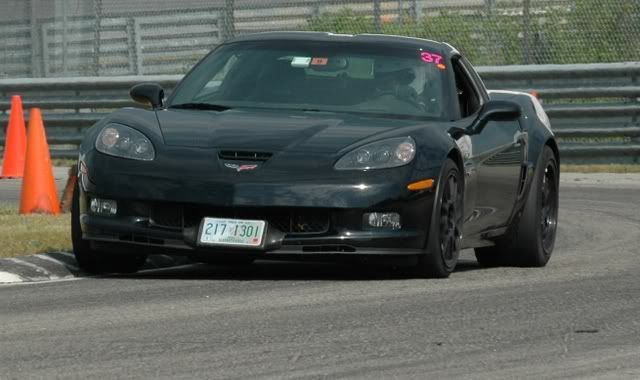

#13
Racer


If we're talking about a C6Z06, do you what the clearance dimension is between the frame and ground where the lifting pucks mount (with the A-arm paralell) ? I may need to check mine to make sure I'm not below that point now.
#15
Good point, although the curbs should be on your lightly loaded inside most of the time, which has travel to spare? Digressive damping curves also help in this regard as well to 'blow off' on the big hits. Low does add it's complications when loading onto the trailers too...
#16
Le Mans Master


Member Since: Feb 2000
Location: Bedford NH
Posts: 5,708
Likes: 0
Received 1 Like
on
1 Post
Cruise-In II Veteran

Yep, but this is my daily driver! Amazingly enough, the R6's have almost perfect wear across the face, even after many many events, although they are about toast now! Don't forget in that pic, the car is riding up the curb so it is leaning more than normal. I wish I had a pic a millisecond later.
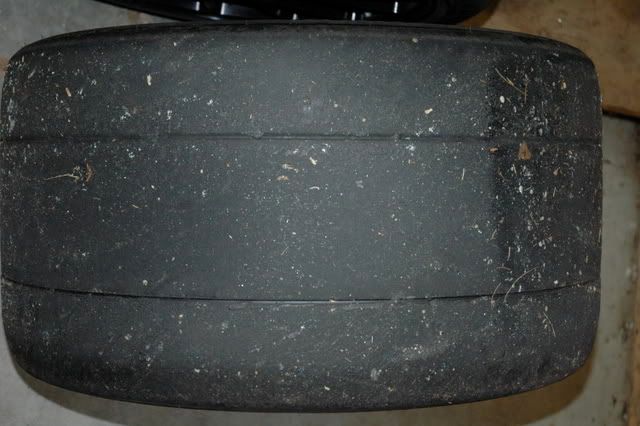
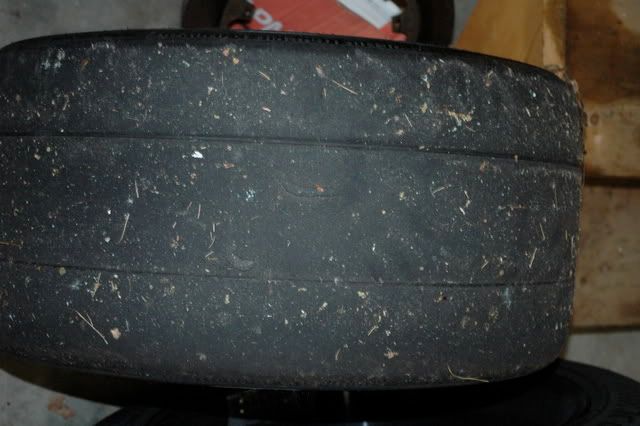
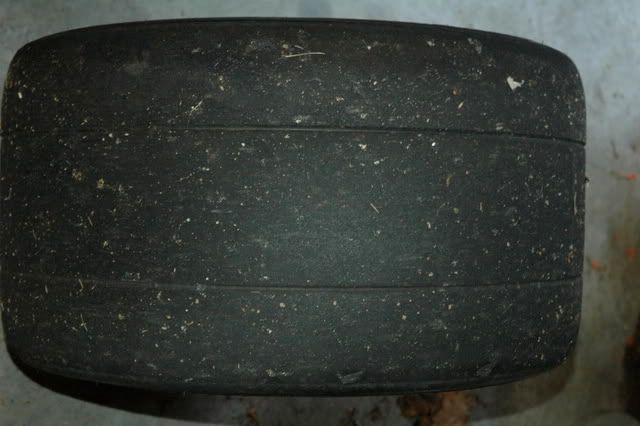



Last edited by ghoffman; 09-30-2008 at 05:26 PM.
#17
Le Mans Master


Member Since: Feb 2000
Location: Bedford NH
Posts: 5,708
Likes: 0
Received 1 Like
on
1 Post
Cruise-In II Veteran

Good point, although the curbs should be on your lightly loaded inside most of the time, which has travel to spare? Digressive damping curves also help in this regard as well to 'blow off' on the big hits. Low does add it's complications when loading onto the trailers too...
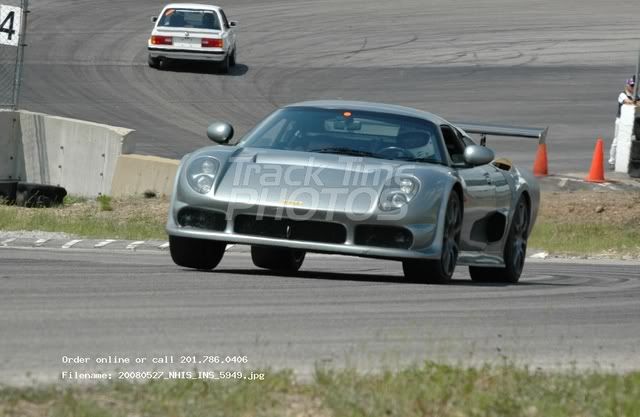
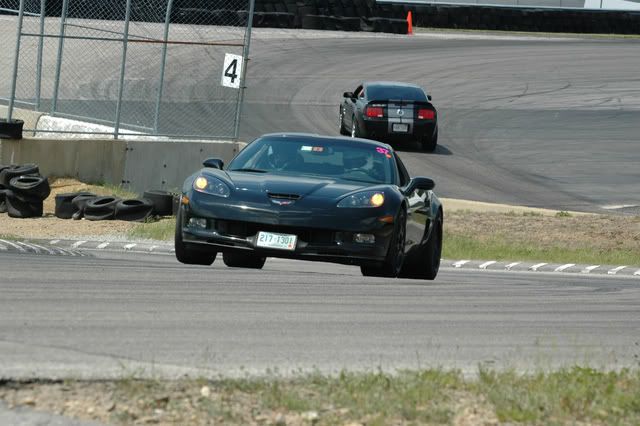
That Noble has about 450 RWHP and alot less weight and he slightly pulls me down the straights. I get him in the corners and coming off of the corners. 4 tires corner better than 2 do!
#18
Le Mans Master


Member Since: Sep 2002
Location: Oakville Ontario,Canada
Posts: 5,187
Likes: 0
Received 5 Likes
on
3 Posts

When we set up my ride height/camber etc it was to achieve good aero and a good balance. This picture is a good view that shows my front spoiler about 1/2" off the ground and the tires just at the fenders. I use bottom fed air so we wanted to scoop up as much as we could.
I hit the curbs just fine, a little spoiler scraping here and there but thats the ONLY impact area. OK, maybe the occasional wheel well if I hit up high on a curb
p.s this is from the Glen a couple weeks ago and yes, I did order the pic...lol waiting for it !!
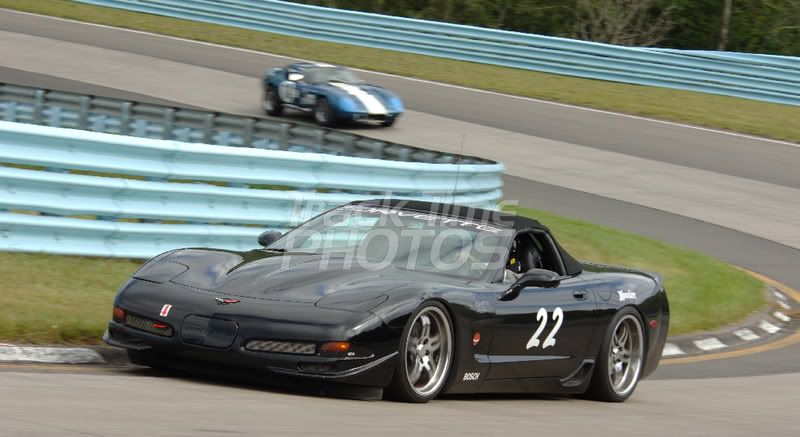
I hit the curbs just fine, a little spoiler scraping here and there but thats the ONLY impact area. OK, maybe the occasional wheel well if I hit up high on a curb
p.s this is from the Glen a couple weeks ago and yes, I did order the pic...lol waiting for it !!

Last edited by GettReal; 09-30-2008 at 10:44 PM.
#20
Le Mans Master


Thread Starter
okay, let me see if i can digest all of that. You need enough suspension travel to deal with any bumps in the road (this would include transitions onto banking, FIA curbing, pot holes or anything else) without bottoming out (tires hitting the fender or frame hitting the ground). Also related to that, the springs should be stiff enough to prevent the car from bottoming out, but soft enough so the tires don't end up in the air. From there, lower is better assuming that you can adjust for the changes in roll center location, and roll axis position.
I guess the question remaining is how do you compensate for the changes in roll center location, and roll axis position and why does the control arm need to be level?
am I at least on the right track?
I guess the question remaining is how do you compensate for the changes in roll center location, and roll axis position and why does the control arm need to be level?
am I at least on the right track?



 and you need those curbs!
and you need those curbs! 



